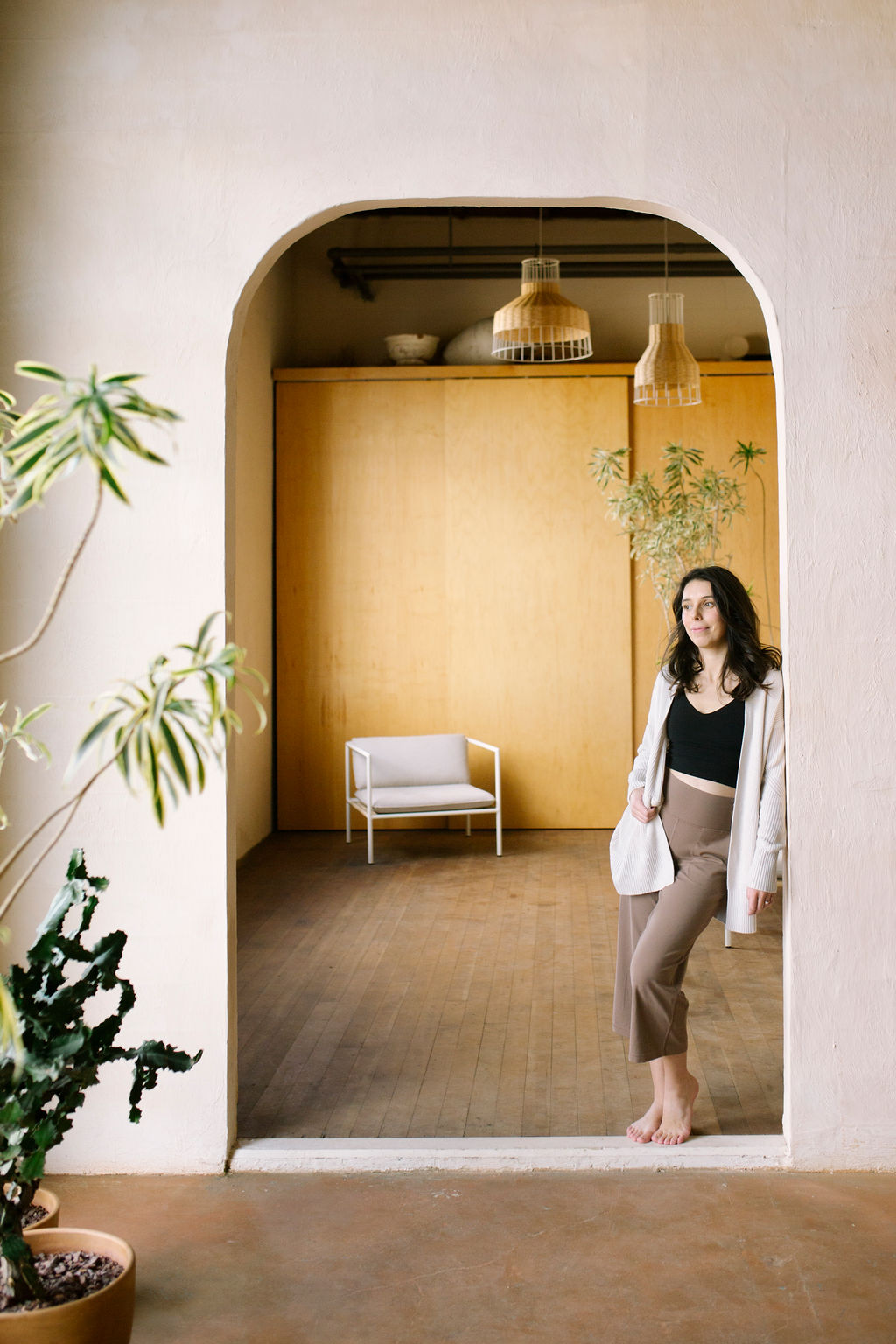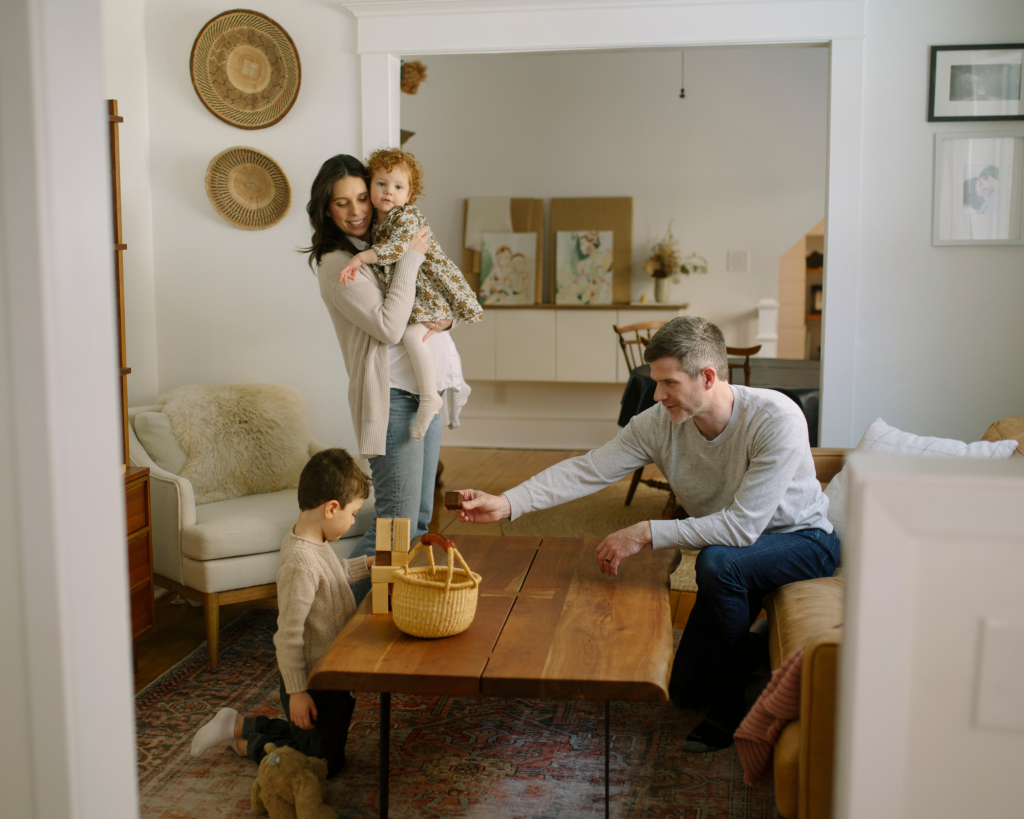
Overstimulated by toy clutter and mess? Yeah me too. What drew me towards Montessori in my own home was honestly the aesthetics of it all. Then, I started to learn more about the method and holistically love it so much. Montessori is a method of education for children that seeks to develop natural interests and activities rather than use formal teaching. It places emphasis on hands-on learning and developing “real-world” skills. Their method brings emphasis to learning and independence. Children are very able and capable and you can give them power to reach and access what they need.
It feels counter intuitive right? Bring the toys to them and if everything is in reach won’t there be a bigger mess? Not really! If you teach your children where everything “lives” or goes when they are done. Spaces can not be cluttered and overwhelming for them. Have limited toys out to minimize clutter and overwhelm with choosing what to play with.

7 Benefits We Have Experienced…
- Independent Play – As parents we all want it right? The infamous independent play. It feels like a unicorn – until you start a toy rotation in your house!!!
- Peaceful & Curious Play – Not only do my children independently play but it is also peaceful, creative and curious. My children play more creatively with what they have vs. having everything out and needing that exact car. Toy selection is also important for that too, but we will get to that more in the how to! Open ended toys like blocks, duplos, scarfs, etc.
- Less Fighting over toys between siblings – If everything has a home and minimal toys are out and you have selected toys that are easy to share now the play room is set up for success for playing together! Preschool, Kindergarten and Montessori teachers have time to prep the space and prepare for multiple kids to play together. Give yourself some grace but know that toy rotation can help with this.
- Everything feels “new” again – We have about 6-8 boxes in rotation and rotate them about weekly to bi-weekly… my kids forget that they have these toys and they honestly feel new again to them! You know that “new toy” excitement and energy kids get? Think about having that energy in your house but you don’t have to spend a dime! It helps to encourage that independent play.
- Less time to clean up – Less toys out the less time it takes to clean up. Less toys out also means that there is less fighting on where stuff goes and just throwing it in a random bin and losing the things you have.
- No overstimulation and overwhelm from clutter – You know that feeling of opening the refrigerator and it is a hot mess, everything is not in its home and you have no idea what you have and what has gone bad? It is overstimulating and overwhelming and it leaves you feeling like “I have no idea what to make for dinner now.” The worst feeling! Even worse is when you have a mess to clean up in the kitchen before you even get to that step. Imagine that feeling now for your kids’ toys. If there is a mess already, and then everything is lost and in disarray.. You think that is going to spark some creative joy and peaceful play? The answer is no.
- Donating toys just got a whole lot easier – Depending on how you organize your boxes and if you go through them frequently this can also help cue in for you on what is no longer being played with as much and could go to a home that would use it. I like to have one bin near all the other toy rotation boxes that is solely for donation. As I’m putting away a box or getting one out I can add to it. I try to then take that donation box to my local spots seasonally.
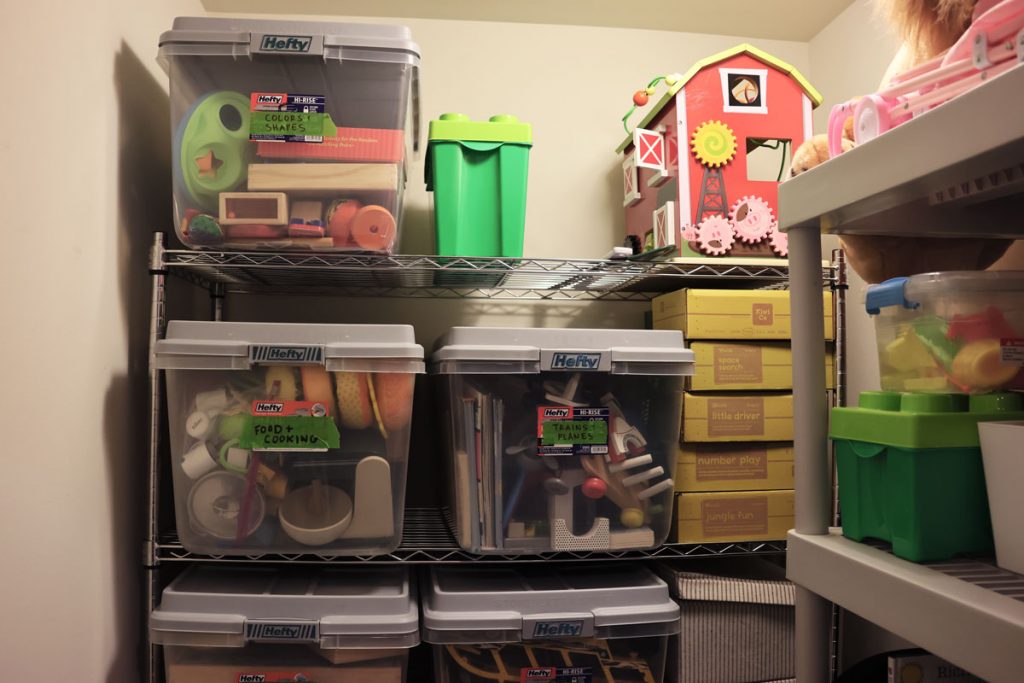
How to implement a Toy Rotation in your house…
Step One: See what you have. Like Marie Kondo style… lay out everything you have in one spot so you can see it all. EVERY TOY, PUZZLE, BOOK, etc. Lay it out and immediately start putting things into a donate bin to minimize what you have.
Step Two: After you have downsized and donated, start to organize. I personally like to organize the toys by category or theme (examples: farm/food, ABCs, construction, animals, cars/trains, space, science, dolls, etc.) Then within each box include toys, stuffed animals, puzzles, books, etc. that relate to those themes. You want to include a variety within each box and always some toys that encourage open ended/ independent play. If you have children of different ages too, include a variety of different age specific toys for baby, toddler, schoolager, etc.
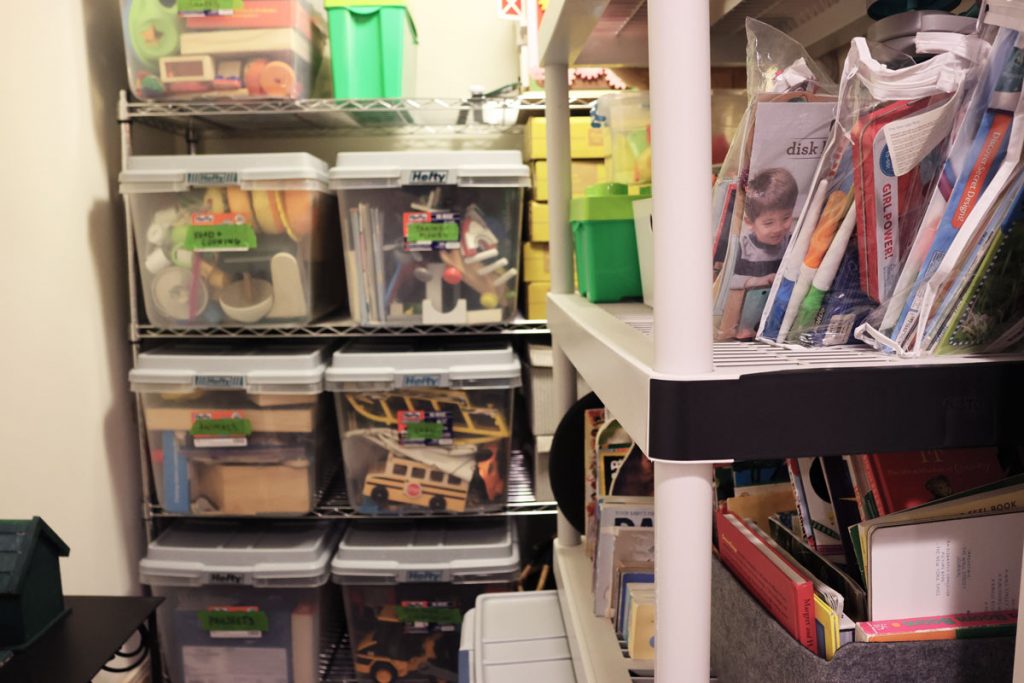
Step Three: Find a spot where your toy rotation will live. A closet or storage area that is not visible or insight will help to create the boundary for the kiddos. It is important to educate and teach your children about the benefits of the toy swap, the rules and boundaries about the toy swap but then also set them up for success. If the toys not in the current rotation are out and about then it’ll be impossible for your children to not want to play with those toys. Out of sight, out of mind!
Step Four: Put out your current box! Find an empty toy shelf or IKEA bookshelf to display your current toy rotation box. Everything needs to have a home on the shelf. I like to have a variety of boxes, containers, baskets to store stuff in. Have a designated home for everything. Once your children are old enough, I like to involve them in this step too. So they then know how to clean up and put the toys away.
Now I know you have questions… Here are some frequently asked questions and answers.
Q: What if my children have favorite toys and they would be devastated if I put them away?
A: My children have specific lovies (Stuffed animals) that we do not include in the toy swap for this exact reason. The toy swap is not designed to piss off children but to help encourage creative and independent play. I leave out some lovies, duplos, blocks and a couple beautiful favorites in our living room space. You can write your own rules with this.
Q: When do you change out your box?
A: I like to change out the box on Monday or Friday. Pick a day and be consistent. Just like Taco Tuesday. “Yay! It is Toy Swap Friday!” Make an event out of it. Encourage your kids to put away the old box and then pick out the new box. Then they help put out the new toys so that they know where everything goes when it is time to clean up. Let them have a hand in it. Maybe instead of weekly, it is monthly for your family… pick your day and stick to it.
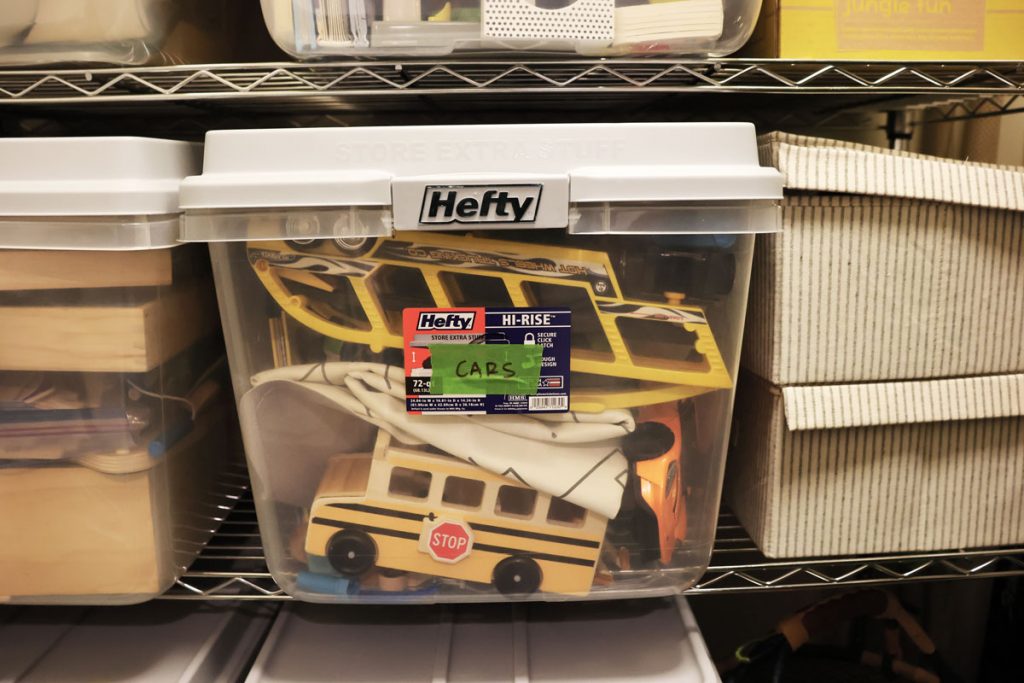
Q: How many boxes do you have?
A: We currently have six boxes. I think about 6-8 boxes feels like a lot but it is a good amount for a weekly rotation and they honestly forget what toys they have. It all feels new again each time they open a new box. I like to have less in each box too and spread the love.
Q: How often do you donate toys?
A: We keep an empty bin in the toy swap closet and have it ongoing for donation. Seasonally I will take that bin to donate. Toy rotation really makes donating easy too. It doesn’t “disappear” they honestly forgot they had that toy OR you can have your kids be an active part of this too.
Q: What do you do when things get disorganized and in disarray?
A: Every so often it does get disorganized. It happens. Life happens. I try to refresh the toy swap every year.
Q: This sounds nice in theory but does it really work?
A: I was skeptical too, but honestly it does work for our family! Once you get your system down it is super easy and not time consuming to maintain. It however is a big project to get started and to implement but it is honestly one of the best things that I have done for our family.
I hope you found this helpful and empowering to implement a toy rotation for your family. Now you just need to pick the weekend night, talk your partner or someone into helping you and get the project to done. Set yourself up for success… buy your bins, containers, baskets, shelf and maybe a good coffee or bottle of wine. Comment with any findings or questions – I am here to support.
Time to tame the toy clutter and stop the overstimulation. You got this!


